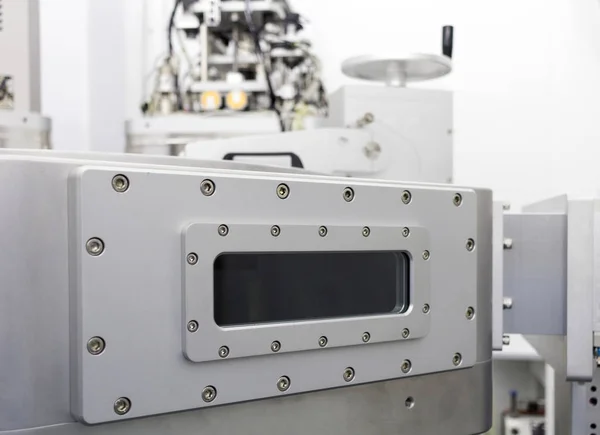Unlocking New Possibilities: Exploring The Benefits Of Robotic Process Automation

Are you tired of your employees being bogged down by repetitive, manual tasks? Do you wish there was a way to streamline your workflow processes and increase productivity? Look no further than robotic process automation (RPA).
By automating mundane tasks, RPA allows human workers to focus on more strategic work that drives innovation and growth.
Not only does RPA save time and increase efficiency, it also reduces costs and errors. With the ability to work 24/7 without breaks or errors, robots can complete tasks faster and with fewer mistakes than humans. And with the reduced need for human labor in certain areas, companies can save money on hiring costs while still getting the job done efficiently.
The benefits of RPA are vast and varied read on to discover how this technology can unlock new possibilities for your business.
Streamlining Workflow Processes
Streamlining workflow processes has never been easier with the power of robotic process automation. With RPA, repetitive and tedious tasks can be automated, freeing up time for employees to focus on more valuable work.
For example, data entry and invoice processing can be done quickly and accurately by software robots, rather than requiring human input. This not only saves time but also reduces errors and frees up employees to focus on higher-level tasks like analyzing data.
In addition to improving efficiency, RPA can also streamline communication between different departments and systems. Software bots can seamlessly transfer data between different platforms, reducing the need for manual intervention. This means that information is processed faster and with greater accuracy.
Overall, implementing RPA in your workflow processes can greatly improve productivity while reducing costs associated with manual labor.
Increasing Productivity and Efficiency
By implementing RPA, businesses can significantly boost their productivity and efficiency, allowing employees to focus on more important tasks. With the automation of repetitive and mundane tasks, such as data entry and processing, employees have more time to focus on creative problem-solving and strategic decision-making. This not only leads to a more engaged workforce but also increases overall productivity.
Here are three ways in which RPA can increase productivity and efficiency:
- Automation of manual processes: By automating routine tasks such as data entry or invoice processing, businesses can reduce errors caused by human intervention while improving the speed at which the task is completed.
- Streamlined workflows: RPA can help identify inefficiencies in workflows, making it easier for businesses to streamline processes and optimize resources.
- Improved customer satisfaction: By freeing up employee time from repetitive tasks, they can better attend to customers’ needs. This leads to improved response times, increased customer satisfaction rates, and ultimately better business outcomes.
Reducing Costs and Errors
You can significantly decrease expenses and minimize mistakes within your business operations by implementing RPA technology. Automating repetitive tasks through software robots can eliminate the need for human intervention, reducing labor costs and improving accuracy.
RPA can also streamline processes by eliminating delays and inefficiencies caused by manual data entry. By automating data collection and analysis, businesses can identify areas for improvement and make informed decisions that increase efficiency while lowering costs.
Additionally, RPA can help prevent errors caused by human oversight or fatigue, ensuring that critical tasks are completed accurately and on time. Overall, implementing robotic process automation can lead to significant cost savings while improving the overall quality of your operations.
Empowering Human Workers with More Strategic Work
With the help of RPA, employees can focus on more strategic tasks that require human creativity and critical thinking. This means they can spend less time doing repetitive, manual tasks and more time contributing to the growth and development of their organization.
By automating mundane tasks such as data entry or invoice processing, RPA allows workers to shift their focus towards more valuable work that requires a higher level of skill. Here are three ways in which RPA empowers human workers with more strategic work:
- It frees up time for employees to pursue professional development opportunities and learn new skills.
- By taking care of repetitive tasks, RPA reduces burnout among staff members, leading to better workplace morale and job satisfaction.
- Automation also helps ensure greater accuracy in routine tasks, freeing up human workers to focus on complex decision-making processes that have a direct impact on business outcomes.
Conclusion
So, with all the benefits that Robotic Process Automation (RPA) can bring to your business, it’s no wonder that more and more companies are jumping on the automation bandwagon.
By streamlining workflow processes, increasing productivity and efficiency, reducing costs, and empowering human workers with more strategic work, RPA is unlocking new possibilities for businesses everywhere.
But remember: introducing RPA into your organization isn’t a one-size-fits-all solution. You need to carefully assess your business needs and choose the right tools and strategies for successful implementation.
With careful planning and execution, however, you’ll be able to reap the many rewards of robotic process automation – from improved efficiency to increased profits – and take your business to the next level!






